Google Workspace
Google Workspace now with the best of Google AI
to boost productivity and innovation
Google Workspace
Google Workspace now with the best of Google AI
to boost productivity and innovation
Create, connect and collaborate with the power of AI
Google Workspace (formerly known as G Suite) helps teams of all sizes connect, create and collaborate. With many deployments under our belts, our consultants are no strangers to Google’s new collaboration tools. Utilizing business best practices and methodologies that we have created over the years, our team of Google certified consultants will support you in the process of change management and adoption strategies tailor-made to your business. We understand that every business’ requirements are unique and will adapt to your specific needs.
Create, connect and collaborate with the power of AI
Google Workspace (formerly known as G Suite) helps teams of all sizes connect, create and collaborate. With many deployments under our belts, our consultants are no strangers to Google’s new collaboration tools. Utilizing business best practices and methodologies that we have created over the years, our team of Google certified consultants will support you in the process of change management and adoption strategies tailor-made to your business. We understand that every business’ requirements are unique and will adapt to your specific needs.
Why work with a Google Cloud Premier Partner in Malaysia?
Why work with a Google Cloud Premier Partner in Malaysia?

What is included?

Gmail
Business email

Drive
Cloud storage

Meet
Video conferencing

Calendar
Shared calendar

Chat
Messaging for teams
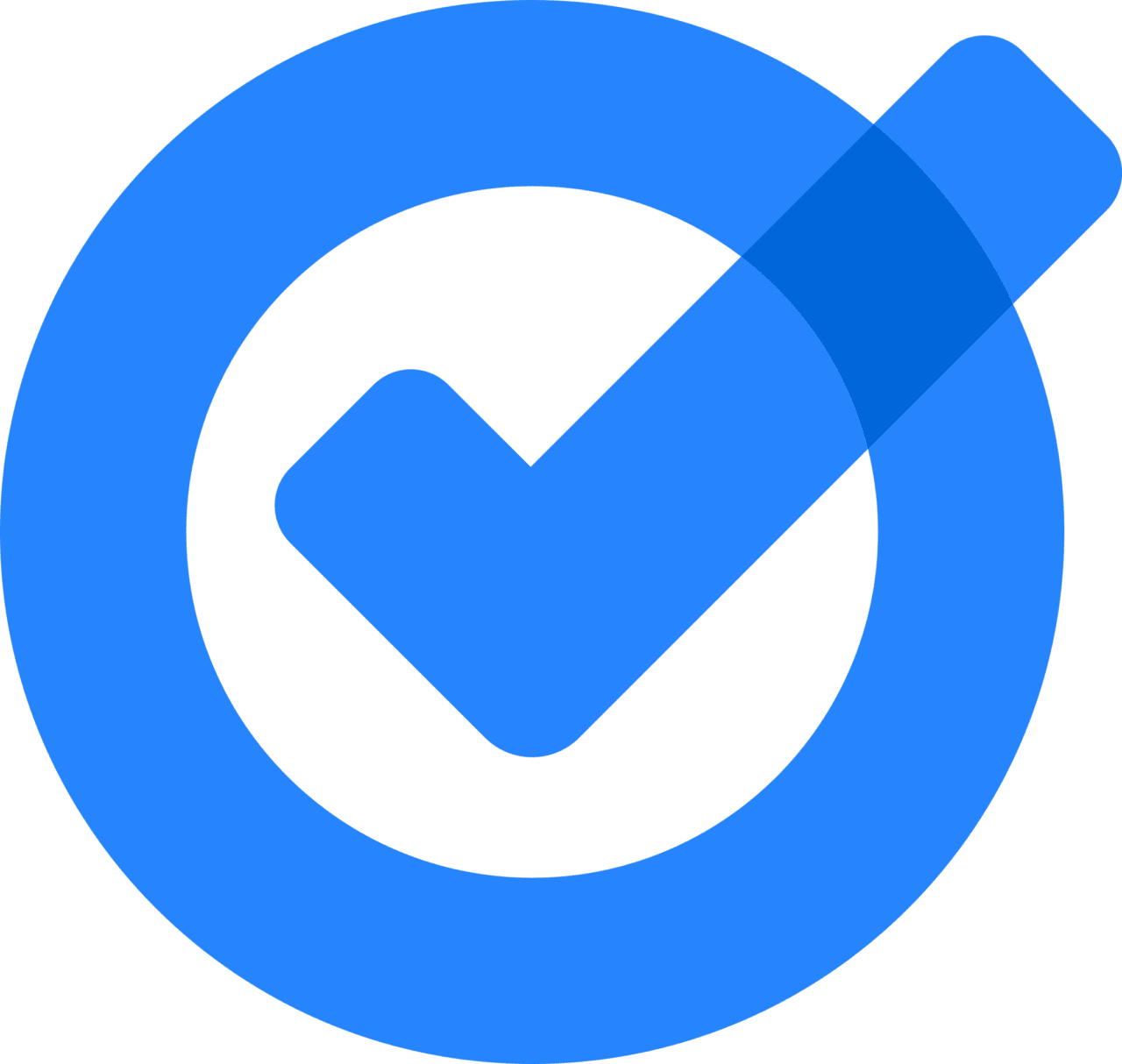
Tasks
Manage to-do list

Docs
Word processing

Sheets
Spreadsheet

Slides
Presentation builder

Keep
Notes keeping

Sites
Site builder

Forms
Survey builder

Cloud Search
Search information

AppSheet
No-code app builder
Apps Script
Business automation

Admin
Manage organization

Vault
Data retention

Endpoint
Secure device management
TExtt
Gemini app
Chat with AI

NotebookLM
AI research assistant

Vids
AI video creation
What is included?

Gmail
Business email

Drive
Cloud storage

Meet
Video conferencing

Calendar
Shared calendar

Chat
Messaging for teams

Tasks
Manage to-do list

Docs
Word processing

Sheets
Spreadsheet

Slides
Presentation builder

Keep
Notes keeping

Sites
Site builder

Forms
Survey builder

Cloud Search
Search information

AppSheet
No-code app builder
Apps Script
Business automation

Admin
Manage organization

Vault
Data retention

Endpoint
Secure device management

NotebookLM
AI research assistant

Vids
AI video creation
Choose the right plan for your business
MOST POPULAR
Business Starter
SGD9.40
per user / month, 1 year commitment
![]() 30 GB pooled storage per user**
30 GB pooled storage per user**
![]()
Secure custom business email, you@your-company.com
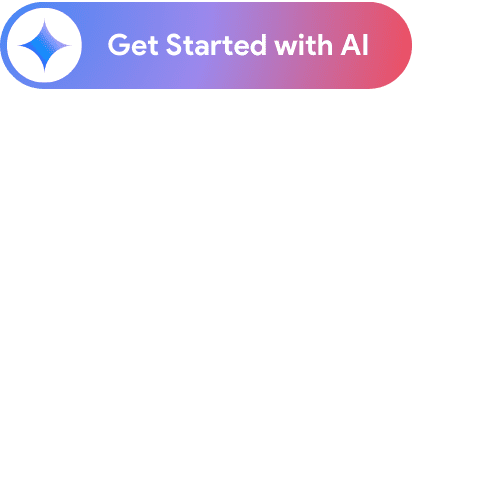
![]() Gemini AI assistant in Gmail***
Gemini AI assistant in Gmail***
![]()
Chat with AI in the Gemini app
![]() 100 participant video meetings
100 participant video meetings
![]()
Security and management controls
![]()
Standard Support
MOST POPULAR
Business Standard
SGD18.80
per user / month, 1 year commitment
![]() 2 TB pooled storage per user**
2 TB pooled storage per user**
![]()
Secure custom business email, you@your-company.com
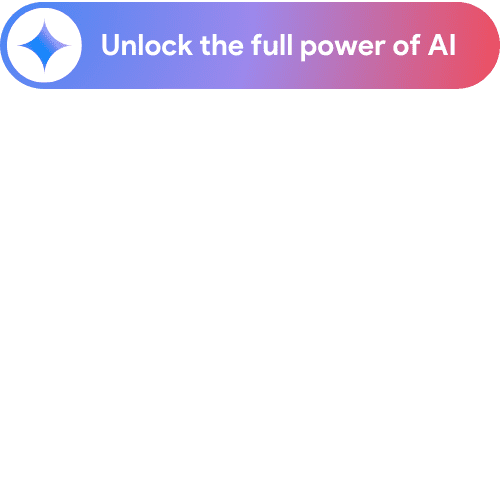
![]() Gemini AI assistant in Gmail, Docs, Meet, and more***
Gemini AI assistant in Gmail, Docs, Meet, and more***
![]()
Gemini app + create your team of AI experts***
![]() AI research assistant (NotebookLM Plus)***
AI research assistant (NotebookLM Plus)***
![]() 150 participant video meetings + recording, noise cancellation
150 participant video meetings + recording, noise cancellation
![]()
Appointment booking pages
![]()
Collaborative video creator + editor
![]()
Email layouts and mail merge
![]()
Security and management controls
![]()
Standard Support****
MOST POPULAR
Business Plus
SGD29.40
\per user / month, 1 year commitment
![]() 5 TB pooled storage per user**
5 TB pooled storage per user**
![]()
Secure custom business email, eDiscovery, retention

![]() Gemini AI assistant in Gmail, Docs, Meet, and more***
Gemini AI assistant in Gmail, Docs, Meet, and more***
![]()
Gemini app + create your team of AI experts***
![]() AI research assistant (NotebookLM Plus)***
AI research assistant (NotebookLM Plus)***
![]() 500 participant video meetings + recording, attendance tracking, noise cancellation
500 participant video meetings + recording, attendance tracking, noise cancellation
![]()
Appointment booking pages
![]()
Collaborative video creator + editor
![]()
Email layouts and mail merge
![]()
Enhanced security and management controls, including Vault and advanced endpoint management
![]()
Standard Support****
MOST POPULAR
Enterprise
Ask us
![]() 5 TB pooled storage per user**
5 TB pooled storage per user**
![]()
Secure custom business email, eDiscovery, retention

![]() Gemini AI assistant in Gmail, Docs, Meet, and more***
Gemini AI assistant in Gmail, Docs, Meet, and more***
![]()
Gemini app + create your team of AI experts***
![]() AI research assistant (NotebookLM Plus)***
AI research assistant (NotebookLM Plus)***
![]() 1000 participant video meetings + recording, attendance tracking, noise cancellation, in-domain live streaming
1000 participant video meetings + recording, attendance tracking, noise cancellation, in-domain live streaming
![]()
Appointment booking pages
![]()
Collaborative video creator + editor
![]()
Email layouts and mail merge
![]()
Advanced security, management, and compliance controls, including Vault, DLP, data regions, and enterprise
endpoint management
![]()
Enhanced Support****
Choose the right plan for your business
MOST POPULAR
Business Starter
SGD9.40
per user / month, 1 year commitment
![]() 30 GB pooled storage per user**
30 GB pooled storage per user**
![]()
Secure custom business email, you@your-company.com

![]() Gemini AI assistant in Gmail***
Gemini AI assistant in Gmail***
![]()
Chat with AI in the Gemini app
![]() 100 participant video meetings
100 participant video meetings
![]()
Security and management controls
![]()
Standard Support
MOST POPULAR
Business Standard
SGD18.80
per user / month, 1 year commitment
![]() 2 TB pooled storage per user**
2 TB pooled storage per user**
![]()
Secure custom business email, you@your-company.com

![]() Gemini AI assistant in Gmail, Docs, Meet, and more***
Gemini AI assistant in Gmail, Docs, Meet, and more***
![]()
Gemini app + create your team of AI experts***
![]() AI research assistant (NotebookLM Plus)***
AI research assistant (NotebookLM Plus)***
![]() 150 participant video meetings + recording, noise cancellation
150 participant video meetings + recording, noise cancellation
![]()
Appointment booking pages
![]()
Collaborative video creator + editor
![]()
Email layouts and mail merge
![]()
Security and management controls
![]()
Standard Support****
MOST POPULAR
Business Plus
SGD29.40
\per user / month, 1 year commitment
![]() 5 TB pooled storage per user**
5 TB pooled storage per user**
![]()
Secure custom business email, eDiscovery, retention

![]() Gemini AI assistant in Gmail, Docs, Meet, and more***
Gemini AI assistant in Gmail, Docs, Meet, and more***
![]()
Gemini app + create your team of AI experts***
![]() AI research assistant (NotebookLM Plus)***
AI research assistant (NotebookLM Plus)***
![]() 500 participant video meetings + recording, attendance tracking, noise cancellation
500 participant video meetings + recording, attendance tracking, noise cancellation
![]()
Appointment booking pages
![]()
Collaborative video creator + editor
![]()
Email layouts and mail merge
![]()
Enhanced security and management controls, including Vault and advanced endpoint management
![]()
Standard Support****
MOST POPULAR
Enterprise
Ask us
![]() 5 TB pooled storage per user**
5 TB pooled storage per user**
![]()
Secure custom business email, eDiscovery, retention

![]() Gemini AI assistant in Gmail, Docs, Meet, and more***
Gemini AI assistant in Gmail, Docs, Meet, and more***
![]()
Gemini app + create your team of AI experts***
![]() AI research assistant (NotebookLM Plus)***
AI research assistant (NotebookLM Plus)***
![]() 1000 participant video meetings + recording, attendance tracking, noise cancellation, in-domain live streaming
1000 participant video meetings + recording, attendance tracking, noise cancellation, in-domain live streaming
![]()
Appointment booking pages
![]()
Collaborative video creator + editor
![]()
Email layouts and mail merge
![]()
Advanced security, management, and compliance controls, including Vault, DLP, data regions, and enterprise
endpoint management
![]()
Enhanced Support****
* Offer available to new Google Workspace customers only. This introductory price is only available for the first 20 users added, for 12 months. Standard pricing will apply to all users after 12 months. Actual price per user may vary by up to ~0.01% due to rounding. Final price will be shown before completing sign-up.
** Google Workspace provides flexible pooled storage per user that is shared across the organization. Visit our Help Center to learn more about getting additional storage for your organization.
*** The global rollout of Gemini for Google Workspace, the Gemini app, and NotebookLM Plus is currently in progress. Access may be limited until the rollout is complete in all regions.
**** Paid upgrade available from Standard to Enhanced Support, or from Enhanced to Premium Support on Enterprise plans
* Offer available to new Google Workspace customers only. This introductory price is only available for the first 20 users added, for 12 months. Standard pricing will apply to all users after 12 months. Actual price per user may vary by up to ~0.01% due to rounding. Final price will be shown before completing sign-up.
** Google Workspace provides flexible pooled storage per user that is shared across the organization. Visit our Help Center to learn more about getting additional storage for your organization.
*** The global rollout of Gemini for Google Workspace, the Gemini app, and NotebookLM Plus is currently in progress. Access may be limited until the rollout is complete in all regions.
**** Paid upgrade available from Standard to Enhanced Support, or from Enhanced to Premium Support on Enterprise plans
Compare plans in detail
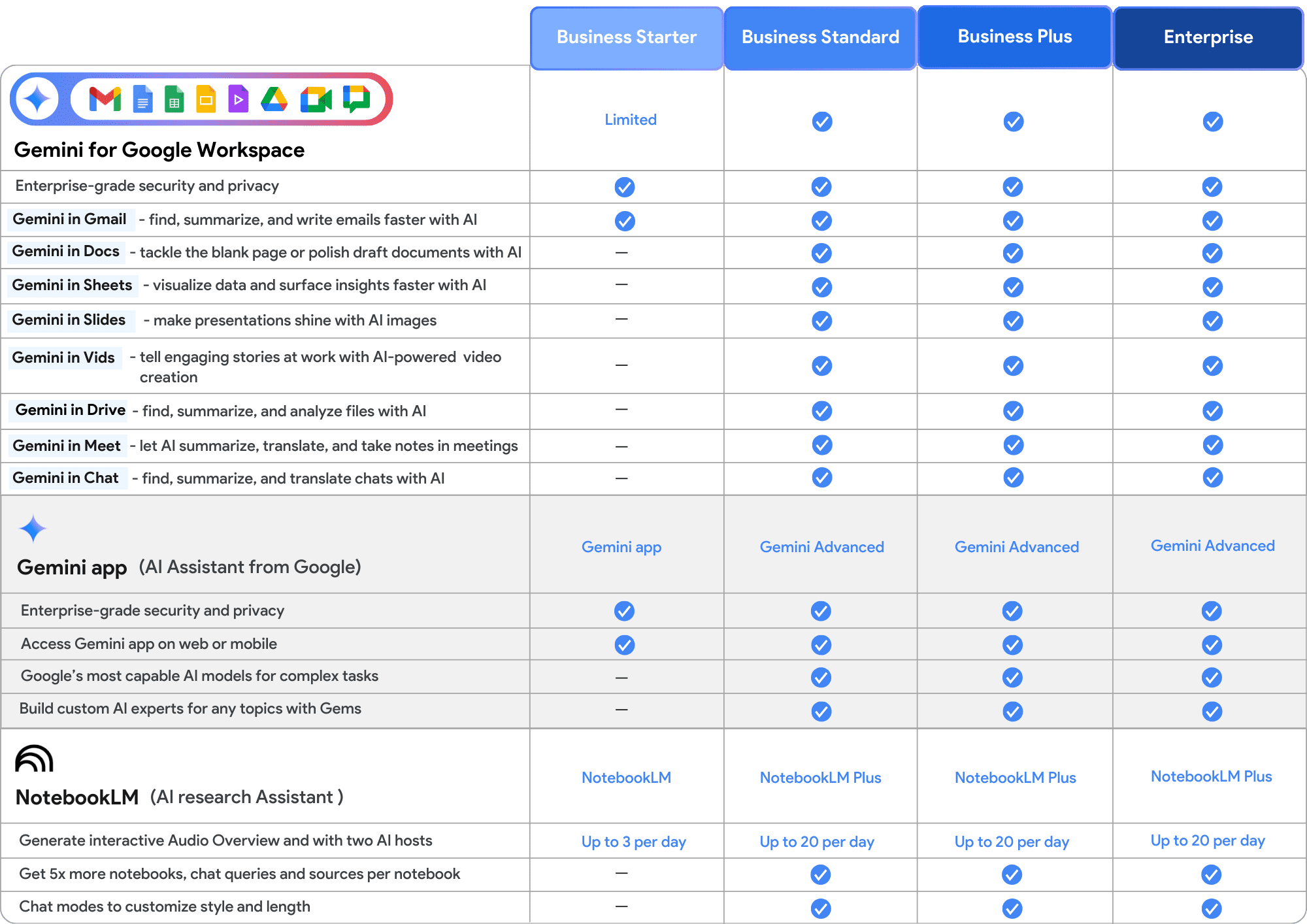
Work Transformation with Google Workspace
Google Workspace is a productivity suite that brings work to life. Collaborate seamlessly across any device through a range of features like Docs, Sheets, Slides and calendar while cutting down on miscommunication with Google Hangouts for text chats and video calls.
Productive
Work from anywhere on any device (even offline) with tools to help you integrate and customise to meet your team’s unique needs.
Simple
An integrated workspace that’s simple to use, Google Workspace lets you spend less time managing your work.
Smart
Streamline collaboration tools, IT setup and management, and costs with a single productivity solution.
Google Workspace Benefits
See how Google Workspace can help you get more done with business productivity and collaboration tools loved by billions of users.
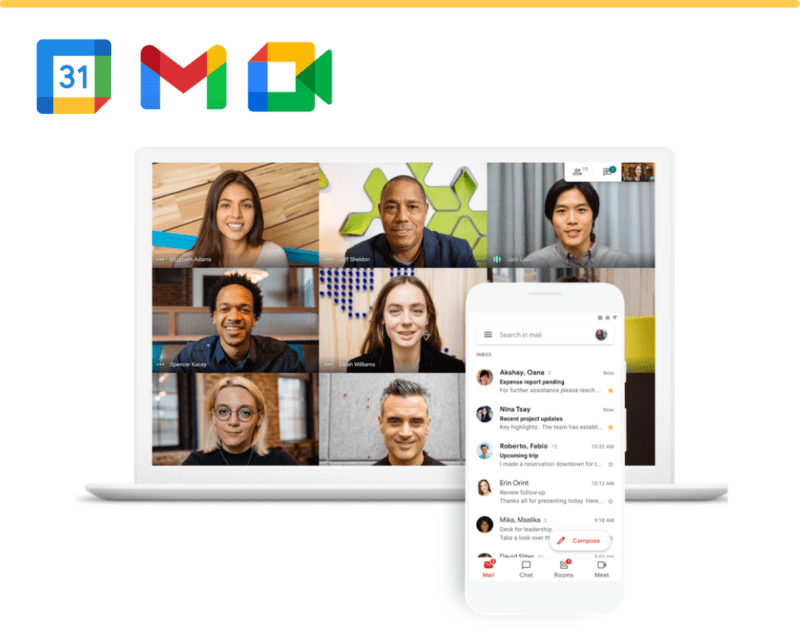
Make decisions faster, face to face.
Use shareable calendars that integrate seamlessly with Gmail, Drive, Contacts, Sites and Meet so you always know what’s next. Schedule events quickly by checking coworkers’ availability with automatic email invites. With one click, turn your meeting into a video conference from any camera-enabled computer, phone, or tablet.
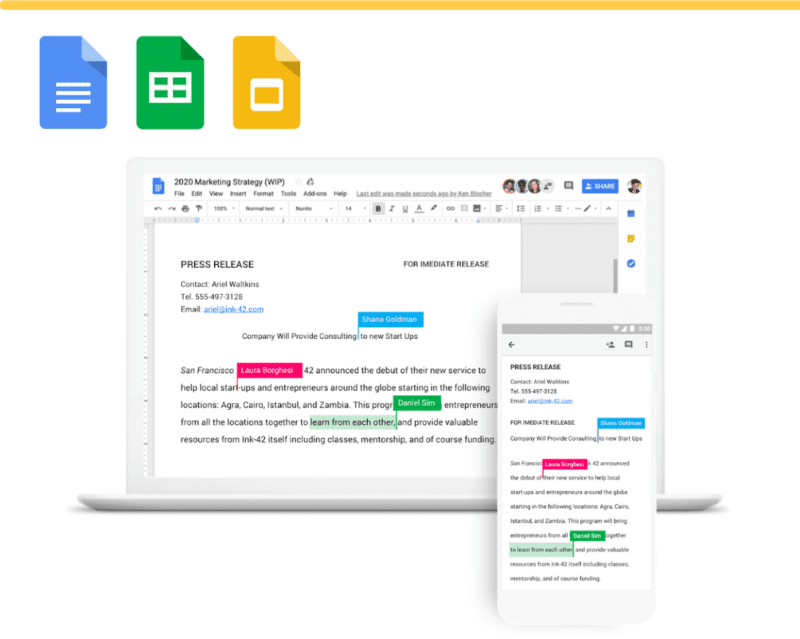
Collaborate in real-time
Speed up workflows on documents, spreadsheets, and slides across your devices, with or without internet.
Give individuals or groups permission to view, comment on or edit spreadsheets. Work alongside your colleagues – no matter where they are – communicate through built-in chat, and ask questions in comments – and see updates as they’re made. Changes are saved automatically.
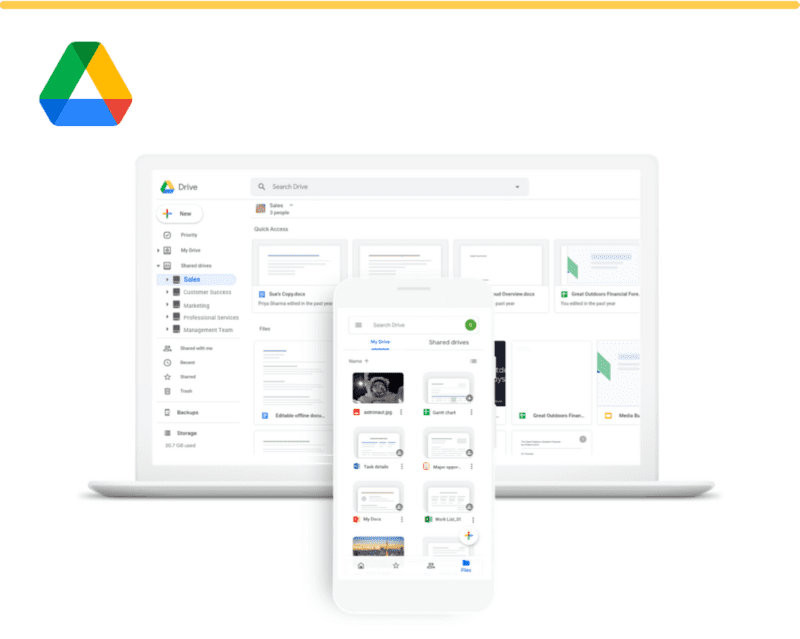
Store and share files in the cloud.
Keep all your work in one place with secure access from your computer, phone, or tablet. Quickly invite others to view, download, and collaborate on any file – no email attachment needed.
File updates are automatically saved and stored in Drive, so everyone can always have access to the latest version.
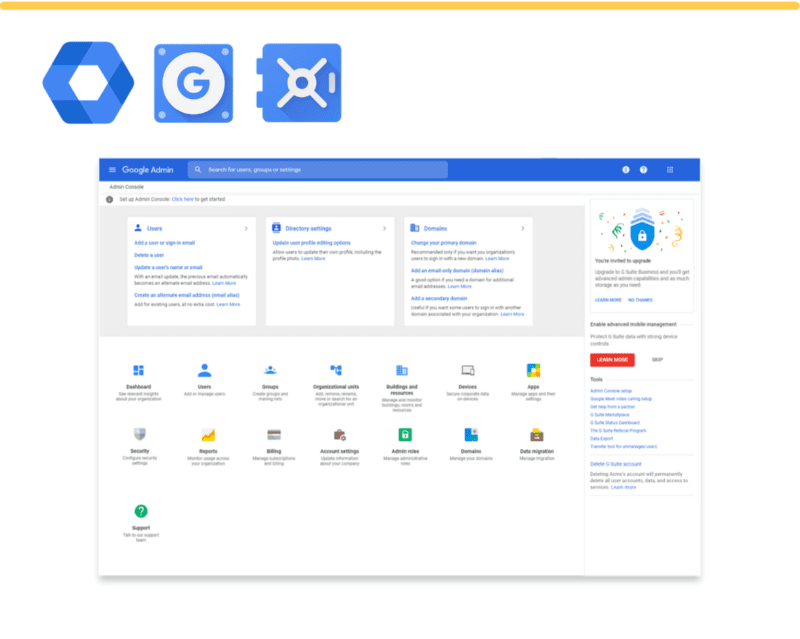
Secure your data and devices
Protect your company’s data with security options like 2-Step Verification and Single Sign-On, and use endpoint management to keep your data safe in case of lost device or employee turnover.Archive email messages and on-the-record chats, and control how long they are retained for.
Easily configure security settings from a centralised administration console, and call or email Google Support for help 24/7.
Services
Setup and Migration
Account activation and email migration services
Training and Enablement
Maximize use of Google Workspace Features and Tools
Custom Services
Automations and workflow using App Scripts and AppSheet
Support Services
Support provided over email, phone and remote desktop
Google Workspace Frequently Asked Questions
Similar to G Suite, all Google Workspace plans provide a custom email for your business and include collaboration tools like Gmail, Calendar, Meet, Chat, Drive, Docs, Sheets, Slides, Forms, Sites and more. For additional details, visit our Google Workspace plans and pricing page.
We have a variety of plans that are designed to meet your unique business needs. To learn more about the various options, find a plan that fits your business needs on our plans and pricing page.
Absolutely. All plans feature a free 30-day trial, so you can start to see the value of Workspace before signing up. Click here to start your free trial.
As we’ve evolved G Suite into a more integrated experience across our communication and collaboration tools, we’ve rebranded to Google Workspace to more accurately represent the product vision.
With Google Workspace, you’ll receive a number of additional business-grade services which are not included with Google’s free consumer apps. These services include: custom business email @yourcompany, twice the amount of cloud storage across Gmail and Drive, 24/7 phone and email support, 99.9% guaranteed uptime on business email, interoperability with Microsoft Outlook, additional security options like two-step authentication and SSO, and administrative controls for user accounts. Learn more here.
Contact sales if you have additional questions.
Contact support if you’re already a Google Workspace customer.
Add-ons sold separately
Hardware
Application
Google Meet hardware
Fast, reliable, easy-to-join web meetings and video conferencing services for any size meeting room.

Jamboard
A collaborative, digital whiteboard makes it easy to create without boundaries and share ideas in real time.
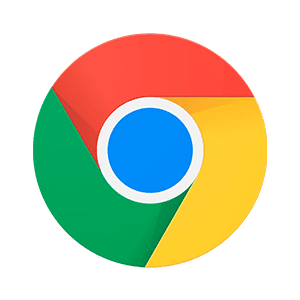
Chrome Enterprise
Unlock the business capabilities of Chrome OS, Chrome Browser and Chrome devices, freeing IT to power your cloud workforce.

AppSheet
AppSheet empowers anyone to build powerful mobile and desktop apps and automation on a unified, no-code platform, customized to your business needs.
Get Started
Sign up for a 30-day free trial
